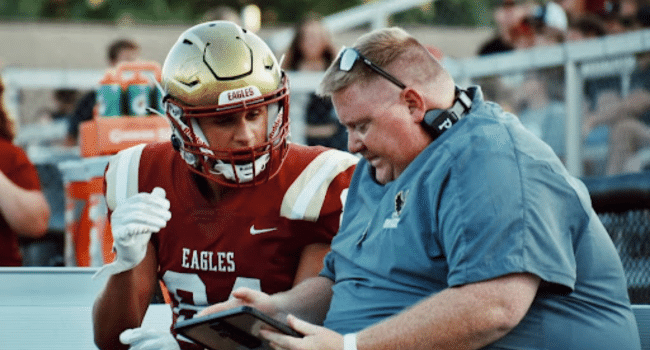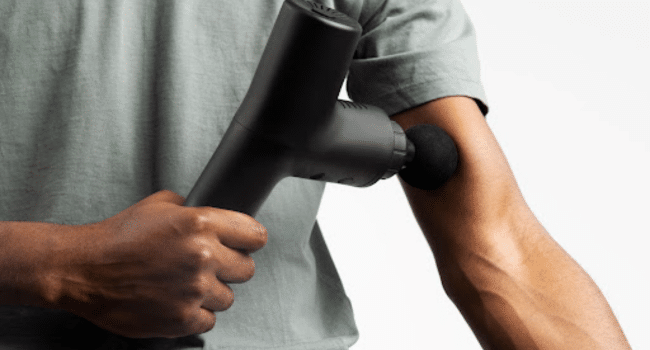Table of Contents
Athletes use recovery tools all the time. They don’t wait until after the game. Some use them before practice, while others use them between sessions. It helps them stay ready. Fans have started noticing this, too. They look at how players prepare, not just how they play.
The New Standard in Athletic Recovery
Recovery is no longer just something athletes squeeze in at the end of a long day; it has become a center-stage part of their everyday routine. Instead of treating it as an add-on, pros fold recovery into their game plan right alongside training and competition. That’s why you see handheld massage guns, inflatable air sleeves, and recovery centers lining locker rooms: they help players bounce back so they can hit the court or field feeling fresh.
Gone are the days when coaches had to guess whether a player was beat up or ready to go. Now, teams rely on real-number data to steer recovery choices. Simple metrics track tightness, soreness, heart rate, and sleep, letting trainers pick the right tool or routine to ease muscle strain and improve mobility before another workout starts.
This approach really matters when the calendar gets crowded, like during the nonstop NBA Summer League. With games lined up night after night, keeping players feeling sharp turns into the hidden ingredient for winning. Coaches zero in on the guys who can run the floor, drain jumpers, and still look spry at the end of the fourth. A few data geeks even take it up a notch by signing into simulation platforms through sites such as MelBet, allowing them to watch recovery numbers tick up almost live. Their main interest is not only what unfolds while the clock is ticking, but also how fast each player gets his legs back before the next burst of intensity.
Core Categories of Recovery Technology
Modern recovery tools can be categorized based on the system they target: muscular, neural, circulatory, or metabolic. Each tool is designed to support a specific part of the recovery process.
Percussion Massage Guns
One of the most popular gadgets in sports recovery, massage guns use short bursts of pressure to target deep muscle tissue. They are often used to:
- Loosen the tight fascia
- Stimulate blood flow
- Reduce soreness after workouts
Many athletes use them both before activity to activate muscles and afterward to cool down. Devices vary in intensity, attachments, and added features like heat. In some training environments, access to guided recovery routines begins with MelBet registration, allowing for more personalized use of these tools. As a result, massage guns have become a staple in both elite and amateur recovery setups.
Pneumatic Compression Systems
Compression boots and sleeves gently apply air pressure to the legs. These devices help the legs recover by gently and slowly moving fluid through the muscles. People who train their legs often — such as in running, football, or basketball — use these tools to relax after workouts. Some models allow pressure control for different zones, like the calves or thighs.
Electrical Muscle Stimulation (EMS)
EMS tools send soft electrical signals that cause muscles to contract without moving the joints. This helps with:
- Recovery in areas that can’t be moved much
- Improving muscle control and coordination
- Reducing soreness after intense workouts
Initially used in rehabilitation, EMS devices are now part of regular training for many athletes aiming to avoid overuse injuries and maintain peak performance.
Popular Recovery Tools Compared
| Device Type | Target System | Best Use Case | Portability | Average Price |
| Massage Gun | Muscular | DOMS, muscle warm-up | High | $200–$600 |
| Compression Boots | Circulatory | Lower body fatigue, post-match flush | Medium | $800–$1,300 |
| EMS Unit | Neuromuscular | Injury recovery, activation | High | $150–$400 |
| Infrared Sauna Blanket | Metabolic | Detox, muscle relaxation | Low | $500–$900 |
| Vibration Foam Roller | Muscular | Deep tissue work, flexibility | High | $100–$250 |
Integrated Analytics and App Pairing
More devices now connect to apps, allowing users to:
- Track session time and intensity
- Monitor fatigue in specific muscles
- Sync data with fitness trackers
In leagues like the Summer League, this allows coaches and staff to adjust training and recovery based on real-time feedback quickly. Fans and analysts even use certain apps that track recovery and performance to understand how recovery impacts game readiness.
Use Cases from 2023–2024 Competitions
During the 2023–2024 sports season, recovery gadgets became hard to miss on the field or court. In European football, clubs such as Manchester City and Real Madrid started using cryo boots with adjustable air pressure between matches so players could quickly chill out and recharge. Over in the NBA, stars like Tyrese Haliburton and Jalen Green kept massage guns on hand during timeouts, giving their legs a quick buzz before heading back into the game.
That high-tech treatment has trickled down to everyone else, too. During March Madness 2024, almost every NCAA locker room was stocked with EMS (electrical muscle stimulation) units and compression sleeves; players simply slipped them on while coaches shouted out last-minute strategies. Today, you will find these same tools in local youth programs and semi-pro training camps, where coaches treat them less like fancy extras and more like must-have gear for helping athletes recover and stay healthy.
Thailand’s Growing Recovery Tech Market

In parts of Southeast Asia, like Thailand, more people have started to focus on recovery in sports. Local teams and gyms now use gear that used to be found only in top clubs from Europe or North America. Fans in Thailand who follow summer leagues are also more interested in how athletes recover off the court.
Clips of players using recovery tools, training apps, and behind-the-scenes tech setups are frequently shared online, capturing the attention of sports communities both in Thailand and abroad. These posts often spark discussions among fans, coaches, and young athletes who look to follow the same method.
What the 2024 Summer League Shows About Recovery Tech
The NBA Summer League is no longer just for spotting new talent. It’s now also a place where teams experiment with recovery tech. From sleep tracking and muscle scans to in-game data reviews, these tools are now part of player evaluation.
As training gets more specific, gear that helps with tiredness or avoids small injuries is now affecting how teams make choices, like who stays on the court or earns a bigger role. Recovery isn’t just for fixing problems anymore—it’s part of the game plan from day one.
From youth leagues in Bangkok to NBA benches in Sacramento, recovery tools are becoming a standard. As they become easier to use and more accessible, their place in modern sports will only grow.
